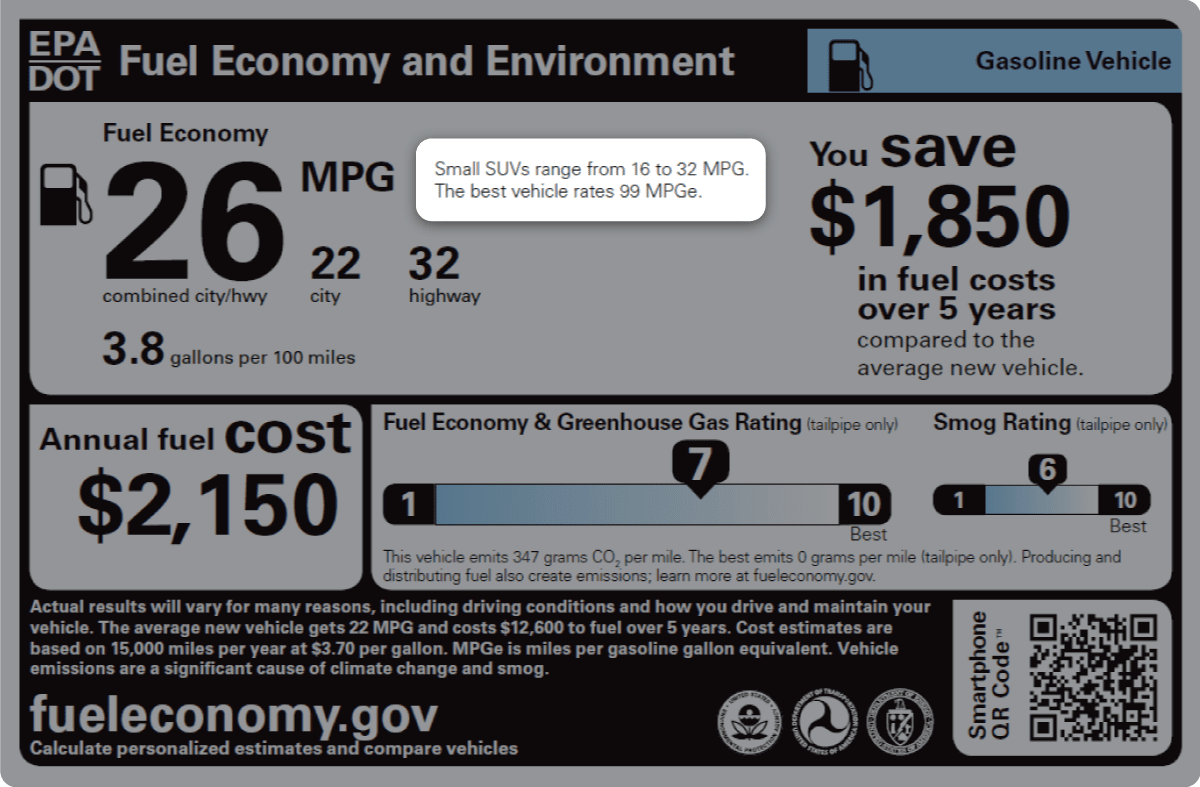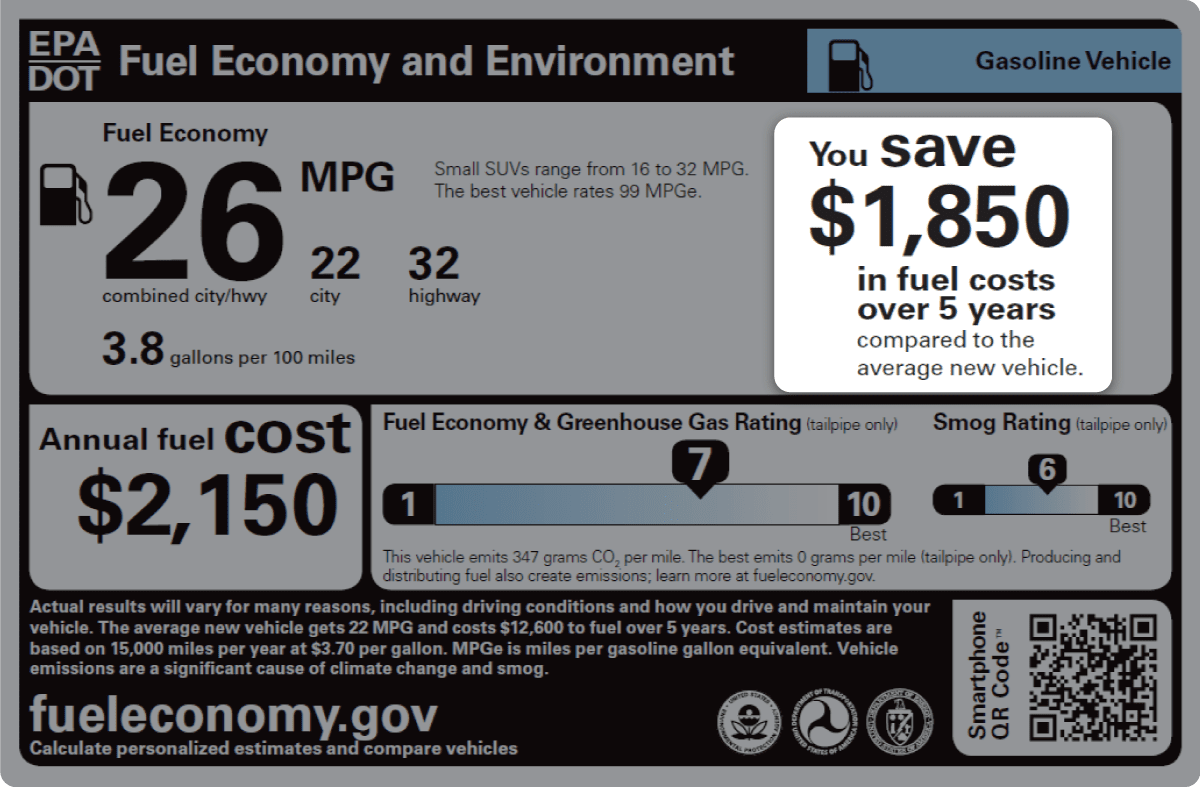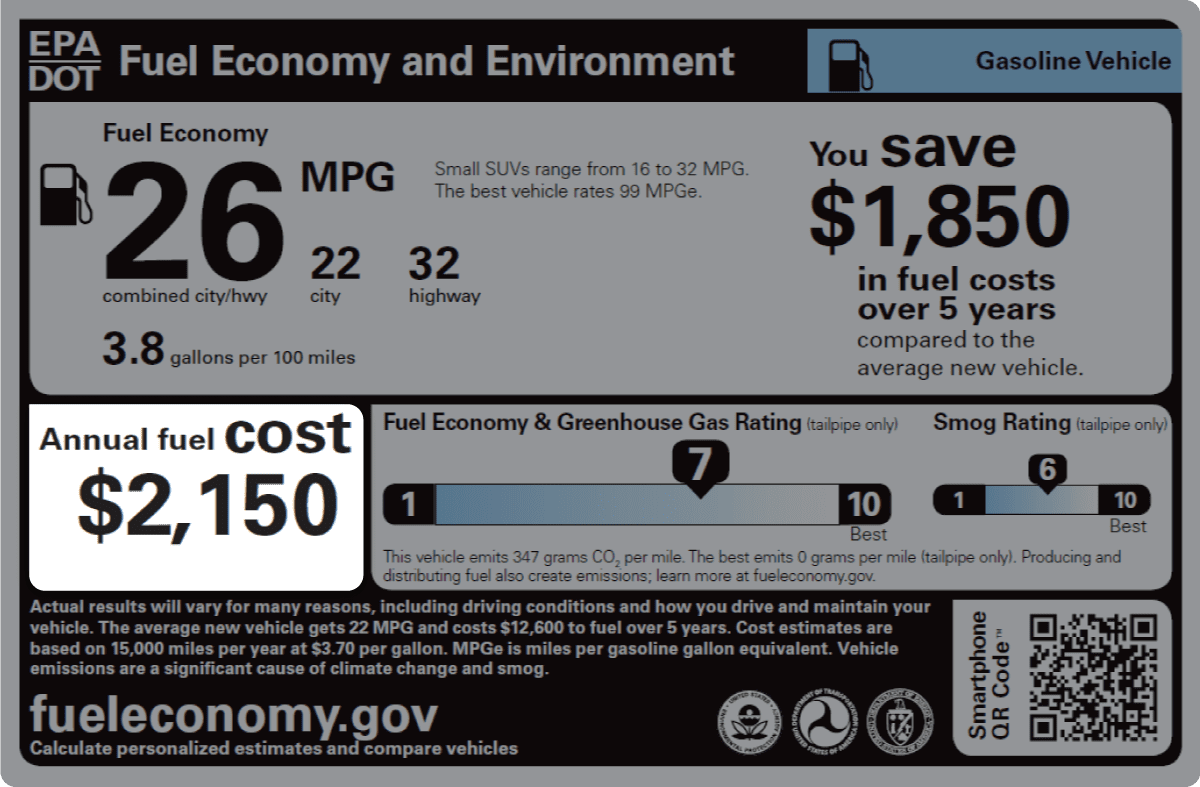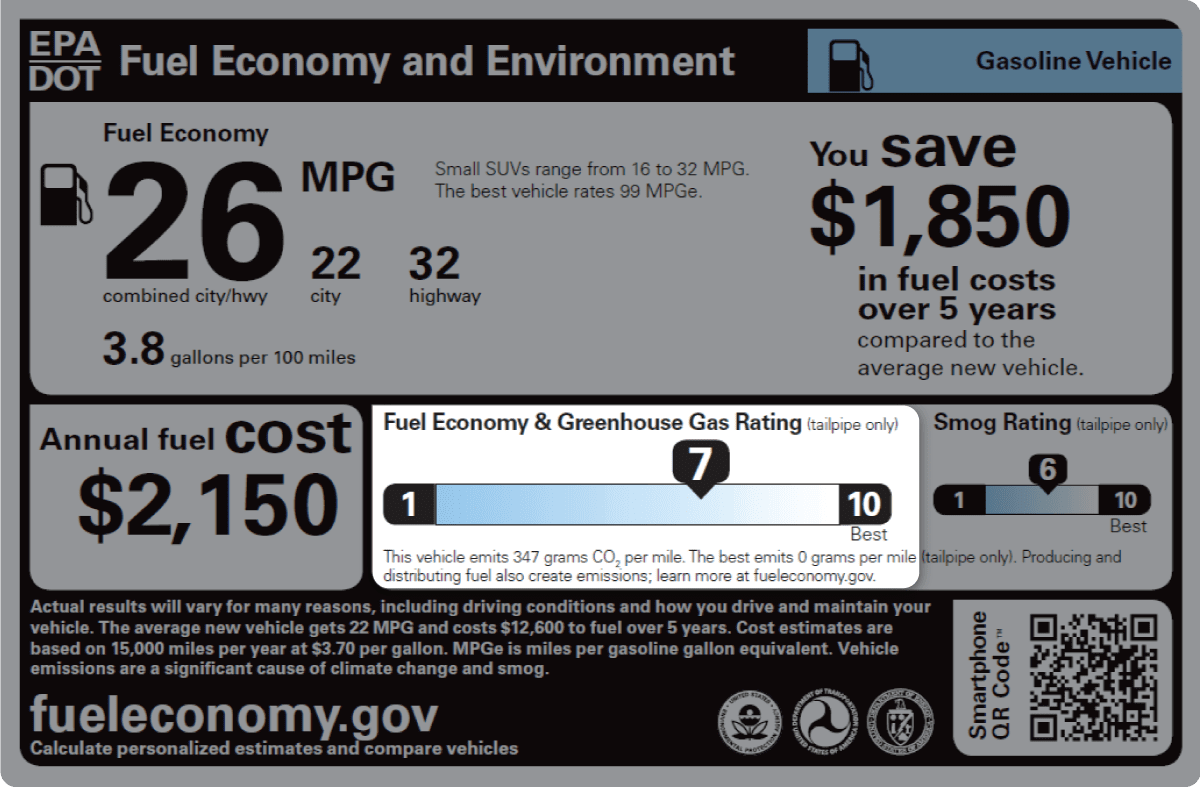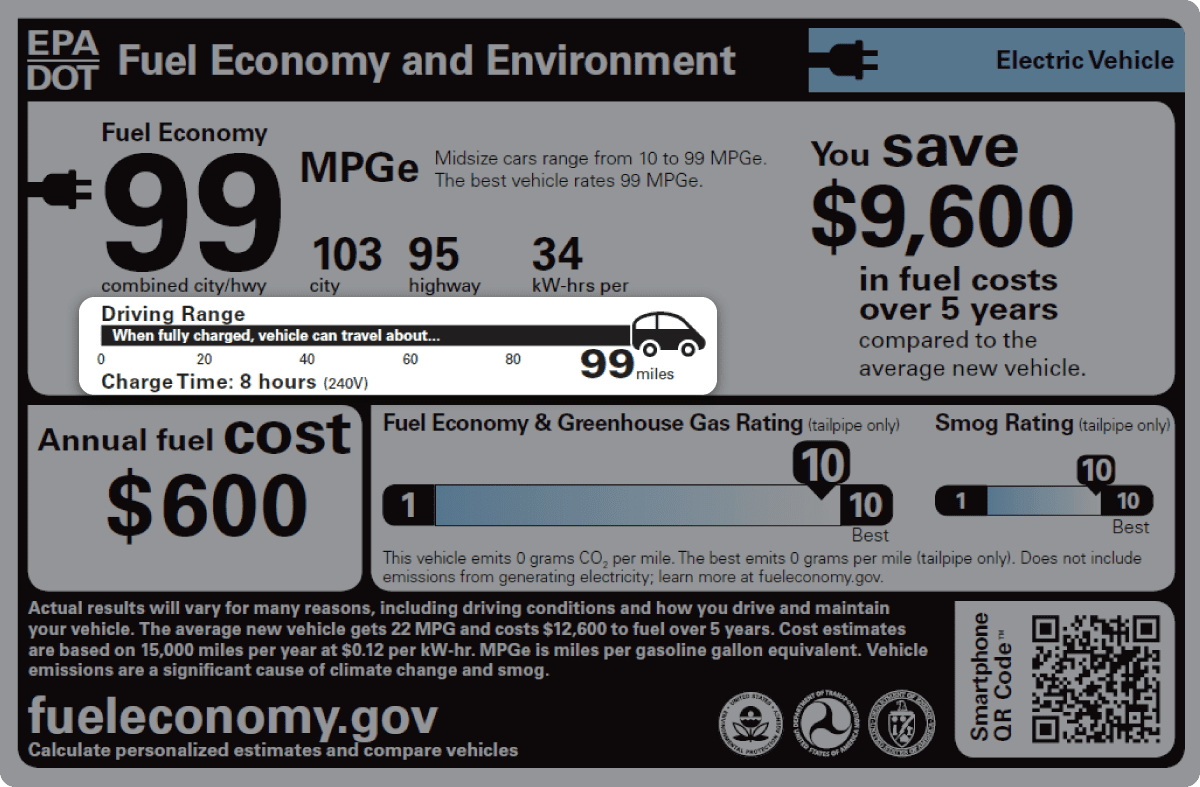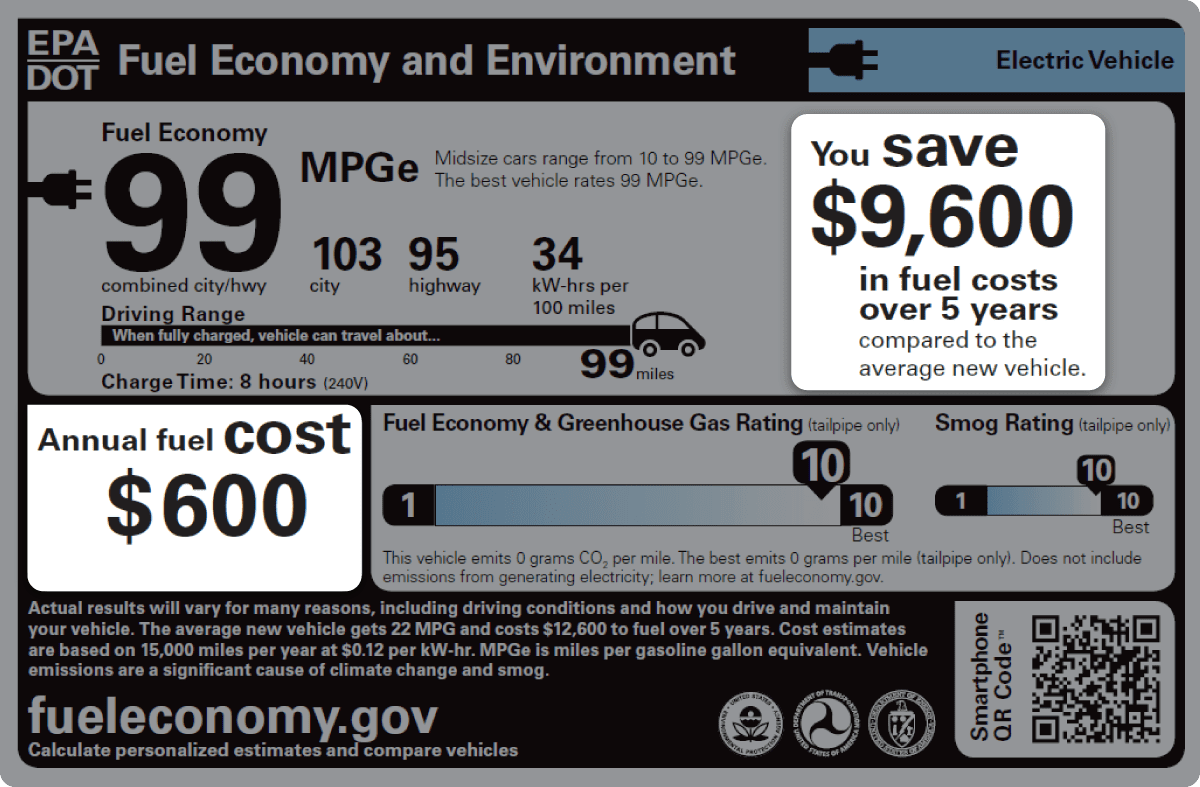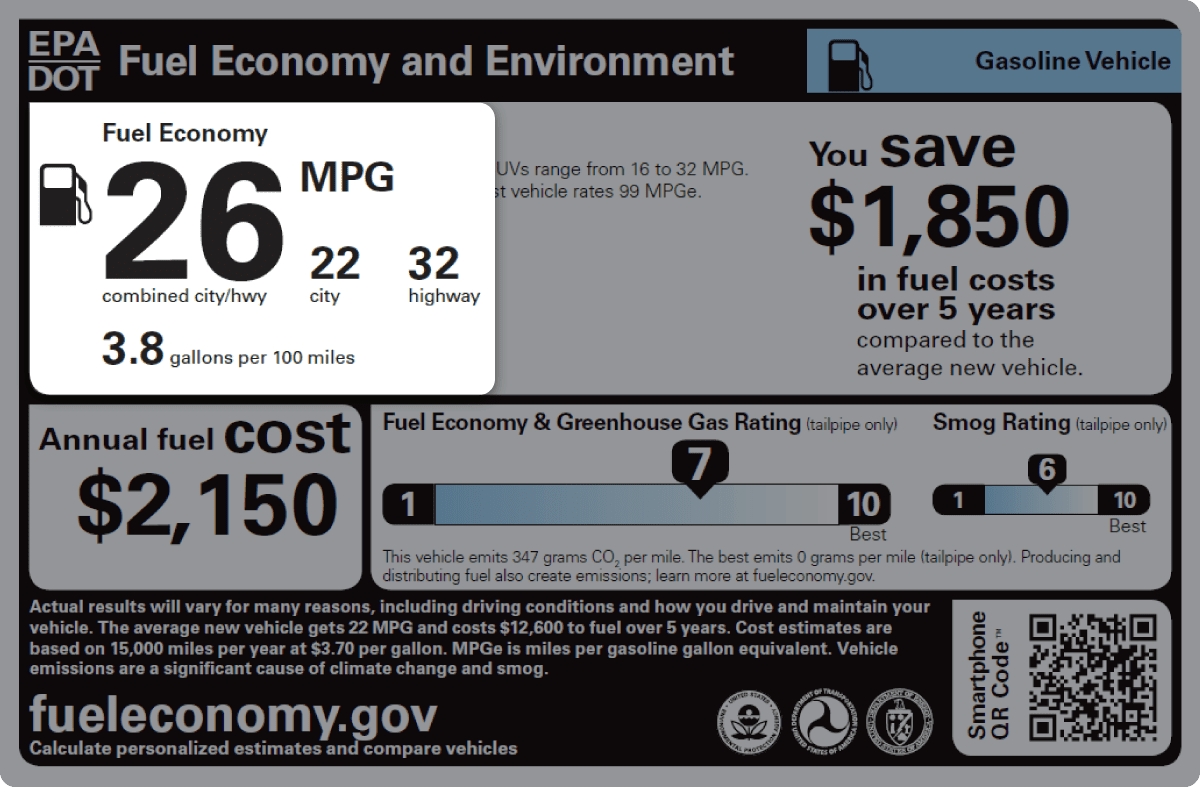
Gasoline Vehicle
Most prominent on the EPA label for gasoline vehicles is the combined city/highway fuel-economy figure; in this case, 26. It’s calculated based on 55 percent city driving and 45 percent highway driving, so it’s roughly an average between the city rating (22 in this case) and the highway rating (32). Note that for most conventional (non hybrid) gasoline-powered vehicles, the highway rating is almost always the highest, and thus is what’s commonly quoted in ads—even though few people will ever achieve that figure.
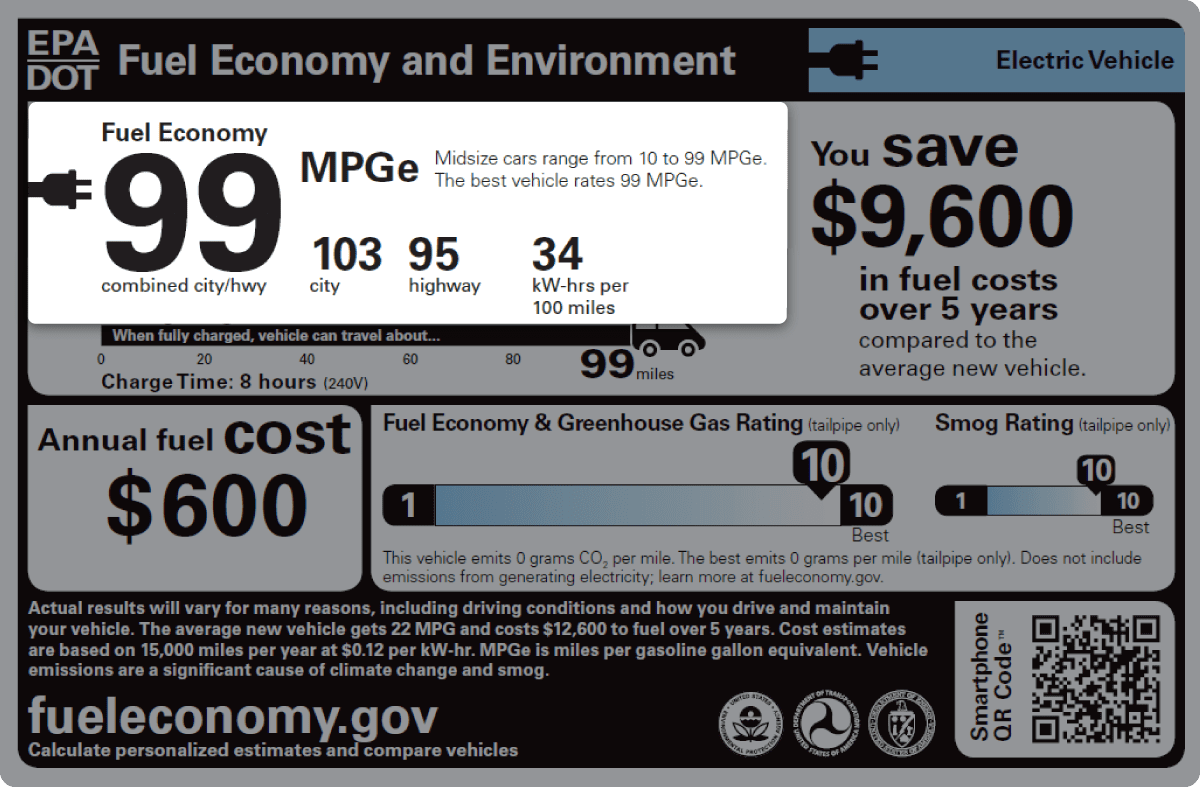
Electric Vehicle
Since electric vehicles don’t use gasoline, they can’t very well be given a conventional “MPG” (Miles Per Gallon) rating. Thus the EPA has devised the “MPGe” rating for electric-powered vehicles, meaning “Miles-Per-Gallon equivalent.” The “equivalent” has to do with the energy content of electricity vs. gasoline, not cost, but it’s still a good “ballpark” figure to use as a comparison.
Every new light-duty (passenger) vehicle sold in the U.S. is required to have a “window sticker.” The official name is the “Monroney” sticker, named after the congressman who sponsored the bill requiring them.
At first they were primarily intended to list equipment and prices, but they have since been expanded to include crash-test ratings and EPA fuel-economy estimates. It’s the EPA label we’re concerned with here. It usually takes up about one-fifth of the entire window sticker and can be placed anywhere on the sticker; it looks similar to those shown above.
Due in part to the advent of alternative-fuel vehicles (such as electric cars), the EPA and the National Highway Traffic Safety Administration have revised the EPA fuel economy and environment labels that appear on the window stickers of new vehicles beginning with the 2013 models. Some automakers may have voluntarily adopted the new labels earlier for 2012 models.
Shown are the new labels for conventional gas-powered vehicles and electric vehicles with descriptions of certain sections. Other EPA labels—including those for diesel and “flex-fuel” vehicles—along with more information, can be found at www.fueleconomy.gov.

